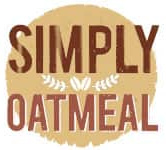If you are looking for a home remedy for dry, itchy and flakey skin, then an oatmeal bath can ease irritation. It is quite simple to make an oatmeal bath at home to reap the rewards of a calm, soothing application for inflamed skin conditions like psoriasis, eczema, xerosis and much more.
Can you use regular oatmeal for an oatmeal bath? Yes, you can use regular oatmeal to make an oatmeal bath at home. However, colloidal oatmeal produces much better results as it becomes a homogenous mixture when the fine powder is mixed in.
In this guide, we will discuss the difference between making oatmeal baths with colloidal oats and regular oats. The article explores the benefits of oatmeal baths for body care and how to make an oatmeal bath at home using regular oats.
Is oatmeal good for skincare?
Yes, oatmeal is good for skincare. Oatmeal contains plant based compounds with moisture-retaining and anti-inflammatory properties.
Colloidal oatmeal can be made using uncooked rolled oats that can be ground into a fine powder using a coffee grinder, high speed blender or food processor. It is used as a liquid suspension in an oatmeal bath.
As mentioned above, regular oats can also be used to make an oatmeal bath. The oats will release some nutrients, however the large flakes will settle to the bottom of the bathtub and not suspend in the bathwater.
For centuries, oatmeal baths have been used for skin care. There are different skincare products with oatmeal from bath bars to creams, lotions and shampoos.
Readymade oatmeal bath mixtures are also available that contain fragrance, suds and herbal infusions.
Oatmeal treats different skin conditions like:
- Chickenpox
- Diaper rash
- Atopic Dermatitis
- Contact Dermatitis
- Itchy and dry skin
- Psoriasis
- Eczema
- Reactions to plants and insect bites
Some ways oatmeal is used for skincare:
- Acne: Oatmeal contains zinc, which minimizes acne resulting bacteria and inflammation by absorbing extra oil off the skin and stimulating cell activity to fight the acne.
- Dry Skin: Oats eliminate dead cells of the skin as a natural moisturizer and anti-inflammatory that works to exfoliate skin. Oatmeal has a mild pH, which can help in cooling the inflamed skin due to infection or rash.
- Black Heads: Oatmeal has saponins, which eliminates clogged skin pores for clear and smooth skin.
- Itch Relief: Oatmeal normalizes pH levels of the skin and shields the skin by moisturizing the dermis.
What does soaking in oatmeal do?
Oatmeal bath is a liquid suspension that works as a home remedy to treats skin conditions like eczema and psoriasis. Soaking in an oatmeal bath soothes irritation, calms inflammation, and moisturizes skin.
Colloidal oatmeal comprises beta-glucan, antioxidants and nutrient rich starches that hold moisture and acts as a skin lubricant with plant compounds like ferulic acid, aventhramides and vitamin E.
Why does oatmeal soothe the skin?
Colloidal oatmeal forms a protective shield by binding to your skin. Since oatmeal holds water and moisture within itself, it eases inflammation, exfoliates dead skin and relieves skin irritation.
Oatmeal soothes the skin by soaking up extra skin oil, and it has anti-inflammatory and antioxidant characteristics that eliminate dead cells and dry skin. It unclogs the pores by removing the dirt that accumulates, which can aid in relieving itching and acne.
Can oatmeal stop itching?
Yes, oatmeal can stop itching. Oatmeal shields the skin and relieves the irritation, dry skin and eczema related itching of the skin by buffering the skin pH. Although, it is a simple treatment for skin itching issues, it is not a cure for the cause.
Oatmeal eliminates itching by curbing skin inflammation. It moisturizes the skin and makes your skin clean and smooth by exfoliating the skin and eliminating the dead skin cells.
Not only this, but the active saponins act as a skin cleanser with antiviral properties. Colloidal oatmeal can make your skin healthy in more ways than one.
What is the difference between colloidal oatmeal and regular oatmeal?
Colloidal oatmeal is very fine ground oats that can contain the bran, germ and endosperm. Regular oatmeal is the breakfast oatmeal, which typically is comprised of only the oat groat.
Colloidal oatmeal is mixed with any liquid or water to create a suspension. The ground oats that are very fine are evenly distributed in water in colloidal oatmeal.
You can make colloidal oatmeal with rolled oats and a grinder, blender or food processor. Manufactured colloidal oats are ground whole, but the are not the only kind of ground oats.
The most common types of regular oats include steel cut oats, rolled oats and quick oats. However, it is important to recognize that these are not the only types of oats available in the market.
Can I use Quaker oats for an oatmeal bath?
Yes, you can use Quaker oats for an oatmeal bath. Use rolled oats, but its best if you are able to grind the oats in a blender or food processor before adding to the bathwater.
Make a fine oat powder that resembles colloidal oatmeal, it will dissolve in the water when you add it to the tub. If you do not grind the Quaker Oats beforehand, then the oat flakes will settle and sink to the bottom of the tub.
Oatmeal is known for curing eczema and dry skin. It soothes the skin because of its anti-inflammatory properties. It minimizes infection and dead skin cells by exfoliation.
It is best if you use fine oats powder suspended in the water to make an oatmeal bath. It acts as a buffering agent, has antiviral action to treat rashes, minimizes the histamine rate to prevent skin allergies, and cleanses the skin.
How to make an oatmeal bath with regular oatmeal?
You can make oatmeal with regular oatmeal by making a fine ground powder using a blender and then mixing it with warm water in a bathtub.
If you are skeptical about the grocery bought readymade oatmeal or run out of the prepackaged colloidal oatmeal, then consider making your own oatmeal bath by using regular oatmeal.
Follow the steps below for a skin-soothing colloidal oatmeal bath preparation at home:
- Get some rolled oats from the grocery stores or pantry cupboard. Make sure that the oats are free from chemicals, salts, artificial flavorings, colors and sugar.
- Grind the rolled oats into finely ground powder. Use a food processor, coffee grinder or a blender to make them into a powder that dissolves very easily in warm water. You can test by taking a tablespoon of the powder and mixing the ground oats into a pint of water.
- Make an oatmeal bath with warm water. Ensure the bath is not hot as hot water can cause further irritation and inflammation. Begin by blending a cup of oats into the warm bath. You can blend about 1 to 2 cups of colloidal oats to soak in a tub filled lukewarm water.
- Some prefer to keep these ground oats filled in a pantyhose leg that is tied on the top and place it into the warm water. This will minimize the messiness of the cleanup afterwards.
- Soak in an oatmeal bath for about 15 minutes. This is sufficient and also prevents loss of moisture due to over-soaking.
- Pat your skin dry with a clean cloth. It is essential to prevent any skin scrubbing as this can irritate any sensitive areas.
- Leave the oatmeal residue on your skin for about 20 mins to allow your skin to absorb the full nutrient satisfaction from the oats.
- Rinse off the oatmeal sediment with clean water, then dry with a towel.
- Apply a moisturizer after rinsing

Regular Oats For Oatmeal Bath: Final Thoughts
You can use regular oatmeal for an oatmeal bath, but it is recommended to finely ground the oats to make a colloidal oatmeal bath. Oatmeal baths can be made out of rolled and uncooked whole oats, however the results are just not the same.
Finely ground oats make a colloidal suspension using warm water. Regular oats will release minimal amount of nutrients, and the oat flakes will sink to the bottom of the tub instead of remaining in suspension in the bathwater.
An oatmeal bath treats different skin conditions such as eczema, dermatitis, dry skin, itching, and acne. It soothes, relieves itching, and moisturizes the skin.
Try an oatmeal bath for clear and smooth skin complexion. If you are feeling itchy, this is the best home remedy, however it is important to consult a dermatologist or physician if the irritation, rash, or inflammation issue isn’t subsiding and is worsening.

ann
Friday 12th of May 2023
I put my oats in a muslin bag that I wet first to soften the oats then place in the tub while filling with water. Works great and hardly any mess!
Emma
Friday 21st of April 2023
Since colloidal oats are made from whole oats, I'm wondering if making my own by grinding steel cut instead of rolled oats would be better
Joshua
Friday 21st of April 2023
This is a great idea if you have a grain mill. Otherwise, leave the grinding to a professional because you will dull the blades and blow the motor on your food processor or blender before you are able to achieve a fine powder out of steel cut oats.